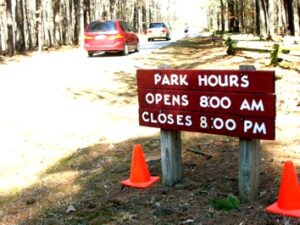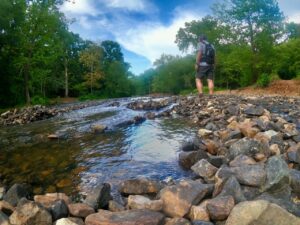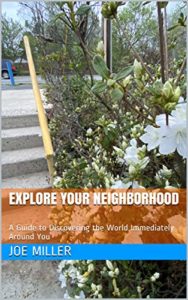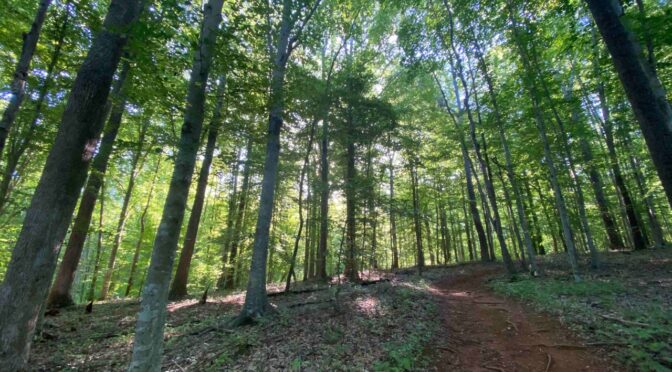On Sunday, we get our evenings back.
At 2 a.m., we spring ahead, setting our clocks forward by an hour and advancing sunset accordingly. Today, the sun sets at 6:19 p.m.; Sunday, it won’t go down until 7:22 p.m. And that’s just sunset; we’ll still have lingering light for another 20-25 minutes or so.
What does that mean for those of us who live to be outdoors?
Assuming the traditional notion of an 8-to-5 workday, it means we’ll have at least two and a half hours of sunlight remaining after the whistle blows to get out and play.
How significant is two and a half hours? If you hike a mile in 20 minutes; that means you can get a 7.5-mile hike in after work. Perhaps a bit much for this early in the season, but good to know it’s possible.
A few things to keep in mind regarding the switch to Daylight Saving Time:
Park hours
 In North Carolina, nearly all state parks close at 6 p.m. in winter. That changes come March. For instance, at Eno River State Park, the Fews Ford Access — the main access — is now open until 9 p.m. (from May to September it will be open until 10 p.m.). That means that on Sunday, when the sun sets at 7:22 p.m., you’ll still have more than an hour and a half to play in the park, a good chunk of which will be in the dark. Check out the closing times at N.C. State Parks starting here.
In North Carolina, nearly all state parks close at 6 p.m. in winter. That changes come March. For instance, at Eno River State Park, the Fews Ford Access — the main access — is now open until 9 p.m. (from May to September it will be open until 10 p.m.). That means that on Sunday, when the sun sets at 7:22 p.m., you’ll still have more than an hour and a half to play in the park, a good chunk of which will be in the dark. Check out the closing times at N.C. State Parks starting here.
Virginia’s State Parks tend to have more set hours, with many open dawn to dusk. For more on their hours, start here.
County parks, municipal parks, nature preserves, land trusts: More often than not, these are open from dawn to dusk as well. Always a good idea to check ahead to be certain; if you’re inside after posted hours, you’re technically trespassing.
Lighter later
Also of importance when the time changes is the hour of sunlight we lose in the morning. This morning, for instance, sunrise is at 6:33 a.m. Sunday morning, the sun won’t be up until 7:27 a.m. If you like to get that morning hike in before starting your day, plan accordingly.
Make the most of it
Some thoughts on how to make the most of your extra hour of afternoon daylight:

Have your gear ready. When the 5 o’clock whistle blows, switch into your adventure gear. Keep your gear simple: hiking shoes/boots, pants, wicking shirt, water.
- Pick a spot to explore. Make it close by: the less time you spend in transit, the more time you’ll have to explore. And staying nearby may force you to find venues you weren’t aware of. Try this: Go to Google maps, drop a pin on your location, then go out a mile or two. Blow up the image and look for blotches of green. You’ll likely find pocket parks you might not have known about, parks that likely have some sort of trail. Also look for dotted lines signifying trails.
- Don’t worry about repeating yourself. Say you find a spot nearby that has a nice, if short, trail. Run with it, again and again. One of the great things about spring is that it unfolds so quickly you’ll likely find something new — a just-emerged spring wildflower, a tree in bloom — every day.
- Consider it training. If you’re gearing up to do some serious mountain hikes this summer, now is the time to start getting your hiking legs back. Two miles every evening through March is a great start.
- Do it! Most importantly, don’t dawdle — take advantage of this extra daylight immediately — like Sunday.
* * *
GetOut!

GetHiking! Spring 2022 Aspiring Hiker Series. Spring aroused your interest in hiking? Our Aspiring Hiker series meets Wednesday evenings at 6, at different trails in the region, and works with you to become a bonafide hiker. We start with a 2-mile hike and build up over 10 weeks to 5 miles. Learn more and sign up here.
“Explore Your Neighborhood: A Guide to Discovering the World Immediately Around You,” is a quick guide to finding adventures out your front door, just the thing for when you’ve got a little extra time on your hands thanks to Daylight Saving Time. Learn more here.
